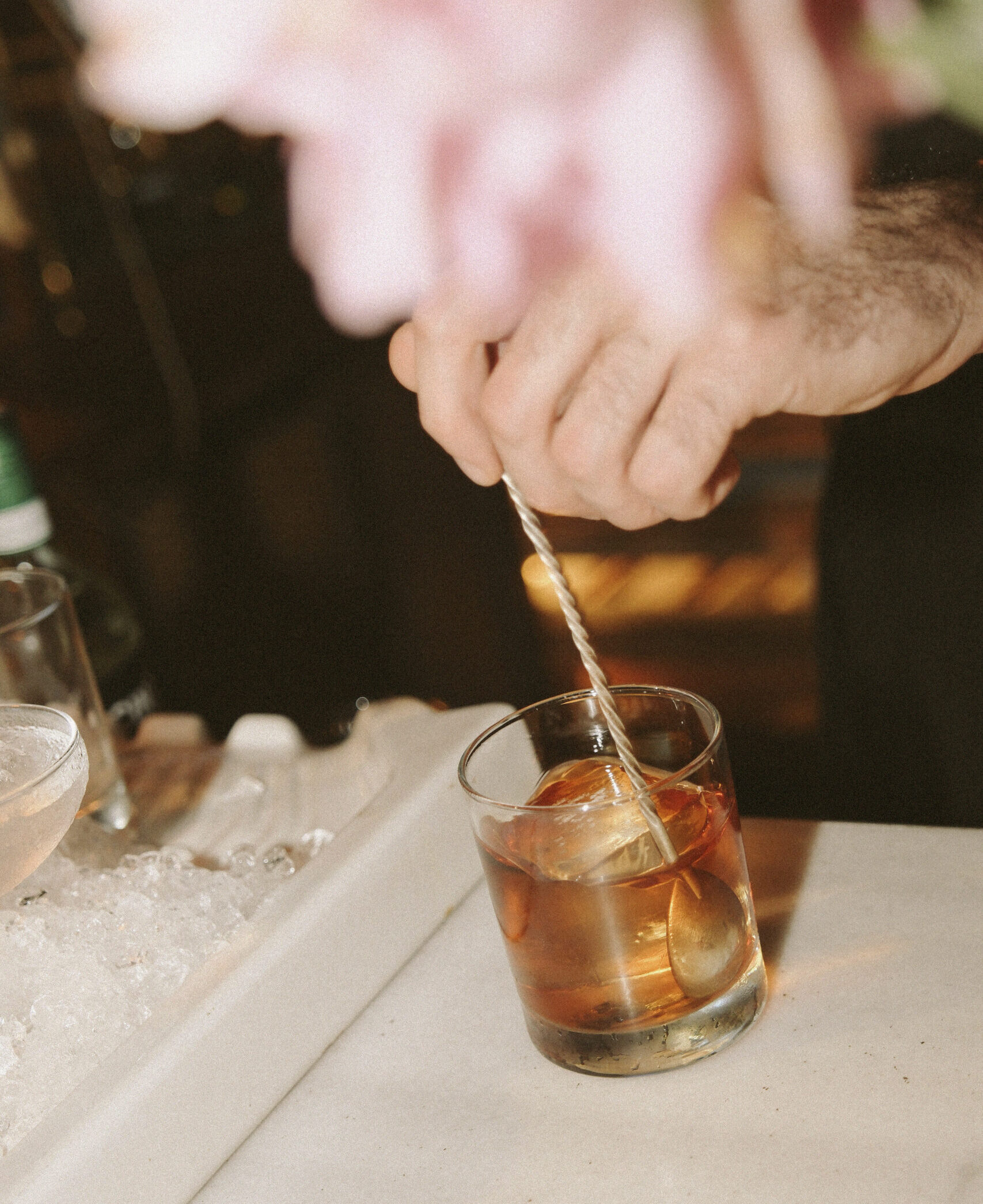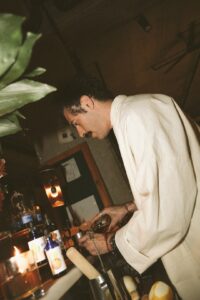
Never Out of Fashion
The Old Fashioned, a cocktail where simplicity meets endless complexity. A timeless favorite among whiskey lovers and bartenders, Kaan Bergsen reveals his favorite recipes, showcasing creative twists on this iconic classic.
by Kaan Bergsen
The Old Fashioned is one of the simplest cocktails to make – it has just three main ingredients – but it is also one of the most complex and technically challenging drinks to master. As with martinis, perfecting this cocktail means understanding both your and your customers’ preferences. It is a simple recipe, but it can be modified to suit anyone’s tastes without losing its uniqueness and complexity. At Petra’s Late Bar, it’s one of our favorite drinks to mix. And it also happens to be a whiskey fan’s favorite cocktail.
There are many stories about the origins of cocktails. I like to believe that early cocktails were created to make unpleasant-tasting liquor more palatable by diluting it and adding sugar and aromatics. This was particularly true in the mid-19th century. At that time, industrialized distilleries were rare, and many people distilled their own spirits. Beer and cider were the most common alcoholic beverages; Higher-proof drinks like whiskey and rum only became widely available much later.
An all-American cocktail, the Old Fashioned is aptly named. It harkens back to an olden time when ingredients were scarce. It’s also considered one of the first cocktails to gain widespread recognition. There are variations of this drink that include Holland gin, as noted in Jerry Thomas’ book, Bartenders Guide: How To Mix Drinks (1862), as well as the infamous modern versions you might find at a Hilton lobby bar, complete with a maraschino cherry on top. However, its origins are simpler. The first printed recipe for an Old Fashioned can be traced to Theodore Proulx of the bar Chapin & Gore in Chicago in 1888:
“Take one-half lump of sugar, and dissolve it with water in a bar or whiskey glass (these terms were interchangeable at the time). Pour out the excess water; add a little bitter, syrup, and absinthe as you would to any other cocktail. Twist a piece of lemon peel; drop it in with two or three pieces of ice and a jigger of whiskey. Stir with a spoon and strain into another whiskey glass.”
Old Fashioned No. 2
There’s also a second version. It’s prepared like the Old Fashioned No. 1, except you use only one chunk of ice and leave it in the glass instead of straining it. This straightforward recipe paved the way for my favorite rendition, the George Kappeler recipe, which is as follows:
“Dissolve a small lump of sugar with a little water in a whiskey glass; add two dashes of Angostura bitters, a small piece of ice, a piece of lemon peel, and one jigger of whiskey. Mix with a small bar spoon and serve, leaving the spoon in the glass.”
Early recipes often called for different spirits, such as aromatic Holland gin or various sherries. However, at Petra’s Late Bar, we focus on perfecting the drink with a high-proof rye whiskey, which is undeniably a “grown-up” liquor if ever there was one. Our recipe is simple and our technique is inspired by Kappeler’s version.
Here’s how we make it:
“Add 2 dashes of Angostura bitters, 1 dash of Regan’s No. 6 orange bitters, and 1 to 1/2 cube of sugar (depending on preference) to a large whiskey glass. Add a splash of water and stir until all the sugar has dissolved and no particles remain.
Once the sugar is dissolved, mix in 2 oz of rye whiskey. We use WhistlePig 10 for its mild and smooth sipping qualities, despite its high alcohol content of 56%.
Keep the glass chilled until serving. At the time of serving, add a large block of ice to control dilution according to the customer’s preferred strength. We like to keep it slightly under-diluted to ensure the drink is cold enough for the first sip while retaining its strength until the last.
Finally, we prefer a lemon twist over an orange twist to keep the drink’s aromas less sweet and more balanced.”



